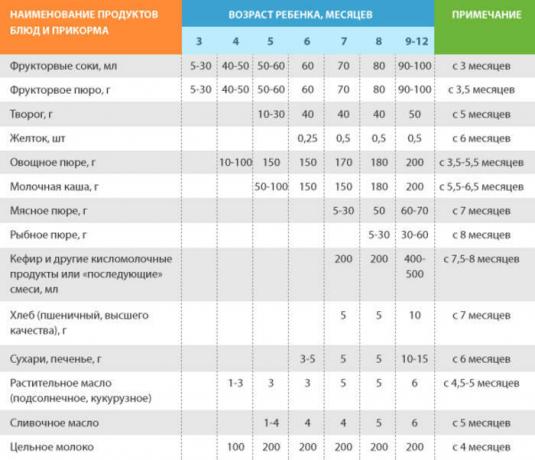Not a year goes by without pediatricians revising and adjusting their recommendations for parents. But there is an obvious trend - over time, doctors' advice becomes less stringent.
How to introduce complementary foods correctly?
For example, there is no ideal time for the introduction of complementary foods, doctors are guided only by the period when the baby needs additional nutrients, and milk is no longer enough. As a rule, parents start complementary foods at 4-5 months.It is also normal to introduce additional food at 6 months, especially for babies who are not developing as actively.
It's time to introduce complementary foods, if the child...
- Sits with or without support
- Does not push out solid objects that are in his mouth,
- Reaches out for food when he sees adults having lunch
- Turns away from spoon when not hungry.
Complementary feeding at 6 months
Complementary feeding at 6 months is a great option for sensitive babies who gain weight well without extra food.But there is no point in delaying the introduction of complementary foods. Already at 6 months, a child needs energy, vitamins and microelements, and milk cannot satisfy these needs.
At 6 months, the digestive system is already actively adapting to a variety of foods, the risks of choking are reduced, and the child can swallow.

How to properly introduce complementary foods at 6 months?
Where to start complementary foods at 6 months
Pediatricians advise using any vegetables and fruits, as well as cereals, cottage cheese and even lean meat. The main thing in the first complementary foods is not "what", but - "in what form." Solid food will still be difficult for the child.Any selected product will have to be mashed.
Some mums try to follow the complementary feeding tables very carefully. They weigh every gram and stick to the schedule of the day. This, of course, is correct, because the tables were compiled by doctors precisely in order to help parents. But their advantage is at the same time a disadvantage - tables are universal. They will not take into account the appetite of a particular baby, his tastes, as well as family traditions, which can negatively affect the introduction of complementary foods.
It makes no sense to follow the scheme at all costs, take into account subjective factors and adapt to the child.
How to replace breast milk with complementary foods?

How to properly introduce complementary foods at 6 months?
According to the first, it is necessary first to give the child complementary foods, and then milk - so he will not get enough and will eat new food for him with appetite.
But there is also a second opinion - to give the baby a breast or a bottle, showing him that there will be feeding now. The baby's attitude is very important for complementary feeding, so feed should be given at the right time. When the child has already understood that now there will be feeding, he can be given complementary foods, then supplemented with milk.
How to quickly introduce new types of products
We choose one new product for complementary foods, give it to the child - without mixing it with other ingredients - and watch the reaction.
The best option would be to introduce one new product every three days, and during this time it is necessary to monitor how the child reacts. First, give a very small amount of complementary foods, such as ½ teaspoon.Increase the portion gradually depending on your appetite.
Avoid introducing a new product after three days if the child is sick or is under stress, such as from moving.

How to properly introduce complementary foods at 6 months?
Two methods of introducing complementary foods
If you are looking to find more information about complementary feeding regimens, you’re likely to stumble across a controversy between pediatric and pedagogical feeding enthusiasts. But, we want to note right away, there is no contradiction between them, and the truth, as always, is somewhere in between.
The pedagogical method is an opportunity for a child to eat food from a common table.
Yes, it will be possible not to put the child in a highchair and force-feed him (sometimes), but the whole family will have to eat what a baby can eat.
The pediatric method is the same stool and puree prepared especially for the child.
And to argue about the correctness of this or that method, we repeat, is not worth it. No modern pediatrician will require a mother to give her child exactly 150 grams of broccoli regardless of her wishes.
How to properly introduce complementary foods at 6 months?
Recall
- How to teach a child to sleep without parents: TOP-4 tips
- What summer soups will strengthen the child's immunity
- What foods do you definitely need on any diet?

